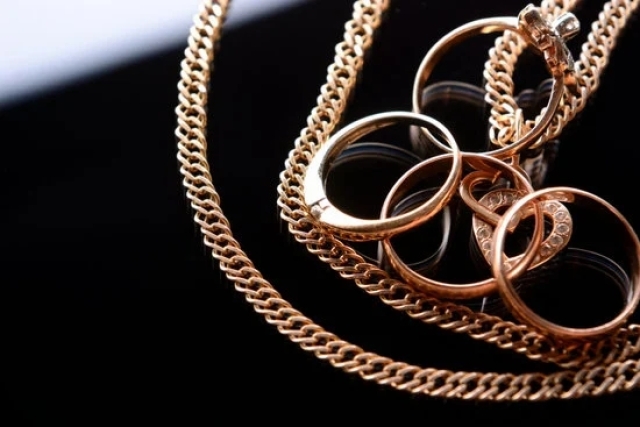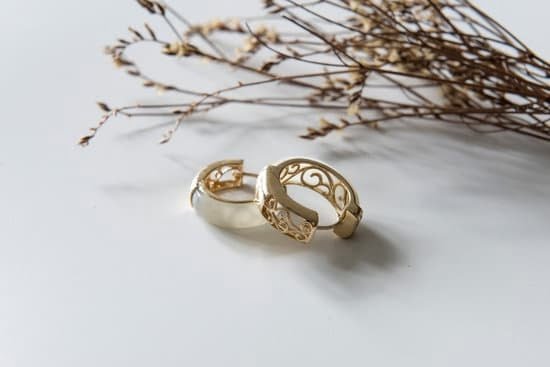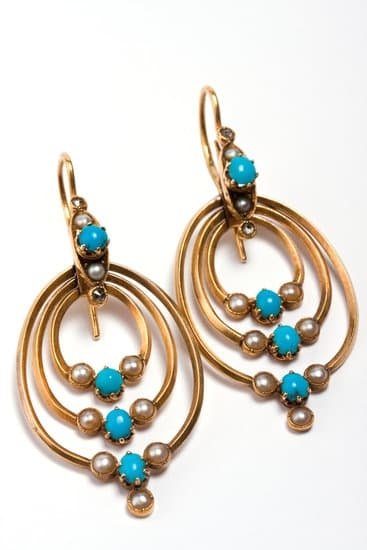Pewter jewelry is often a favorite of many because of its timeless qualities and classic beauty. It can range from ornate necklaces and chunky cuffs to delicate earrings and worn rings. Although it is a strong material that usually lasts decades, pewter jewelry can break if not cared for properly or used frequently. When this happens, the best way to repair pewter jewelry is by soldering the pieces back together with a heating element.
Repair Process: Step-by-Step Instructions
First, you will need to gather the necessary tools: solder wire, soldering iron, a pair of pliers and a clamp or other heat proof holder. Begin by evaluating the damage done to the pewter jewelry piece and open any needed gaps or splits so that you can use a soldering wire to hold them together in place.
Then connect the split ends to a clamp or heatproof holding device so that they can remain in place while they are fused together via solder.
Finally, put your soldering iron on its highest setting before applying some solder wire and running it along the caught edges of your pewter jewelry piece until all areas have been covered. Make sure that the heat from your soldering iron does not cause overly hot locations which may damage your item more than prior to repairing it.
Once your piece has been fully reattached, you may want to file down any protruding parts where extra solder was added for an even finish around all areas as you wrap up your project.
Conclusion: Aftercare for Maintaining Pewter Jewelry
After repairing your pewter jewelry piece, there are additional steps you should take in order to ensure further durability over time. First off, clean off any excess grease or debris with warm water & soap solution; then rinse off with clean water before drying thoroughly with soft cloths or paper towels.
This simple task helps protect against tarnishing due to oiliness or dirt left behind after using acetone based polishes on your precious metals surfaces over time. Additionally, store each item separately inside airtight compartments when not in use; this ensures that no moisture accumulates onto the exterior surfaces which might cause further corrosion and weaken their materials overtime – something neither you nor your beloved newly repaired pewter jewelry deserves.
Supplies
In order to repair pewter jewelry, it is important to gather the necessary supplies that will be required for the job. The essential supplies include a polishing cloth, a soft bristle brush, and any type of pewter-compatible polish or cleaner. Polishing cloths come in various sizes and textures so you can choose one to suit your needs.
Soft bristle brushes are typically used for cleaning off dirt and debris from the surface of jewelry pieces while the type of product used will depend on which kind of pewter you’re working with. Generally indicated on labels, cleaners are available at most craft stores.
Procedures: Carefully Wiping Away Dirt and Debris
The first step in the repair process is to carefully wipe away dirt or excess oils from both sides of the pewter jewelry piece using a soft polishing cloth to ensure that any additional chemicals don’t react negatively with pewter. It is also important to note that as long as no excessive force is applied, no damage should be done to the jewelry piece during this step.
Next, use a soft bristled brush to remove any stubborn dirt from hard-to-reach crevices or hard spots on the jewelry itself.
Cleaning and Polishing: Maintaining its Natural Shine
Once all of the dust and dirt have been removed from the pewter jewelry piece, it is time to conduct either a gentle cleaning or polishing process depending on what kind of pewter you’re dealing with since different types require different instructions.
For instance, if dealing with raw or unfinished brass then it would be best to simply clean off any accumulated tarnish using a neutralizing agent such as white vinegar rather than directly applying silicone polish which could discolor the metal.
Conversely, finished pieces made of nickel (a common ingredient in many traditional brass pieces) could benefit greatly from applying silicone polish since it brings out their natural shine much better than other methods do.
Preparing the Jewelry
If your pewter jewelry needs repair, there are a few steps involved in getting it ready for you to work on it. Before you can begin repairs, the item needs to be properly cleaned and polished. This is important as it allows you to access any damage or parts of the jewelry that need replacing before you begin your repairs.
To do this, use mild soap and lukewarm water to scrub away any dirt or residue from the surface of the pewter. Ensure that all crevices and intricate details on your item are fully clean and free from grime. Once finished, dry the item using a soft cloth before moving on to polishing.
Polishing pewter restores its original shine and luster-this will help make sure that whatever repairs you do won’t stand out against its background. Rubbing alcohol is one of the best materials to use for polishing pewter; by adding it onto a soft cloth and rubbing it gently into the metal’s surface you can easily bring back lost sparkle and shine.
This is an especially effective method if your jewelry has tarnished a bit over time since the alcohol helps remove oxidation from the surface of the metal.
Another option for polishing your pewter involves applying a special polish specifically made for cleaning silverware; these work in much the same way as rubbing alcohol, by removing oxidation and restoring original color. Apply some polish to your soft cloth and use light circular motions to buff away dirt, smudges, and tarnish from hours of wear-and-tear.
Dewaxing solutions can also be used; these are typically used with brass objects but can also work well on most types of metals including pewter because they give off very little heat when buffing up surfaces.
Mending Damage
Pewter jewelry can last for generations, but it’s not immune to damage. Changing temperatures and daily wear can cause pewter to crack or break over time. Luckily, if you know how to repair pewter jewelry you can fix most common problems with minimal effort. Here are some steps you should take when repairing your pewter jewelry:
The first order of business when repairing a piece of pewter jewelry is assessing the damage. Take the time to analyze any cracks or breaks in the item. If there are any particularly deep or wide cracks, then it might be necessary fill them in using a special gloaming compound available at craft stores.
To fill in the cracks, simply follow the instructions on the package and use a toothpick to apply the filler into the crevices. Give it plenty of time to dry before moving on to step two.
Another common issue with pewter jewelry is that gems may come loose over time due to pressure or age. To replace them, begin by carefully inspecting each gem’s prong settings, resetting gems that have become too lose back into their original positions as needed. For gems which have slipped out entirely though; this often requires removing whatever adhesive was used for installation originally before replacing them securely with epoxy glue designed for use on metal objects like jewelry.
Lastly, if your piece of pewter jewelry has been polished previously then after repair you’ll need to re-polish it with a fine-grit cloth or a rotary buffing machine to restore its luster and shine. Even well protected pieces of pewter will require occasional polishing due to dirt buildup or staining caused by body oils and other materials coming into contact with its surface over time; usually every few years depending on how often you wear it.
You don’t want any dullness marring your precious piece so make sure never skip buffing.
Just because a piece of jewelry isn’t pristine doesn’t mean it can’t be beautiful again – don’t let broken pieces go unused because you think they’re beyond repair. With Jewelry Repair from scratch is oftentimes complicated but minor repairs such as restoring lost stones or filling in surface dents itself is usually quite straightforward – just need some patience and careful attention paid every step along the way for perfect results.
Following these simple steps above will ensure that any issues your beloved pieces have don’t stick around forever and keep them looking their best always.
Finishing Touches
Pewter jewelry is an affordable and stylish option that is widely popular. Like many other types of jewelry pieces, pewter can become damaged or tarnished over time. Fortunately, it is actually quite simple to repair pewter jewelry and restore it to its former glory.
One of the most common ways to repair pewter jewelry is through refinishing. Refinishing not only removes the dirt and tarnish from the piece but can also restore the luster of the metal so it looks as good as new. Often this process involves sanding down the metal with a fine-grit sandpaper, then polishing it until it shines before finally applying a sealant to protect its shine. After refinishing, your pewter jewelry should look just like new.
Next, after refiɴԁԁiռց your pewter jewelry there may still be some areas that might require additional polishing in order to bring out its full potential. Using a soft cloth or chamois cloth soaked in warm water, gently rub small circles all over your piece until its is restored to desired shine and lustre. Then wipe away any remaining moisture on your piece with a dry cloth before wearing or storing it away.
Finally, keeping up with regular maintenance on your pewter is helpful in preventing further damage. Once every few months you should use a specialized pewter cleaner to give your pieces an extra level of protection from corroding elements such as sweat and body oils that can cause discoloration over time.
In addition, when storing pewter for periods of non-use make sure air tight bags or containers are used in order to restrict exposure from humidity which can also lead to oxidation damage on exposed metal surfaces.
Create Your Own Art
Pewter jewelry is a wonderful material to work with when creating custom pieces. Whether it’s repurposing old pieces into modern designs or crafting new items from scratch, pewter is very versatile and easy to work with. For those looking to make something unique, here are some tips for how to repair and customize pewter jewelry.
The first step in any jewelry repair process involves cleaning the piece. This can be done by filling a small bowl with warm water mixed with mild soap and letting the item soak for at least 10 minutes before lightly scrubbing it with a soft brush or cloth. Once complete, rinse the piece off and use a soft cloth to dry it thoroughly before proceeding.
Next up is the actual repairs. Pewter jewelry often requires soldering, which requires heat and precision in order to ensure that all of the pieces line up correctly and stay together without fail.
If a basic soldering iron isn’t available, an electric soldering gun will suffice but care must still be taken in order to not overheat the materials being worked on – they must remain cool enough that they won’t melt or suffer permanent damage from exposure to high temperatures. After carefully adding solder, smooth out rough edges with sandpaper and gently buff the repaired area until everything is flush against one another and there are no more visible joints visible.
After the basic repairs have been completed comes the fun part of customization – adding plating, enameling or polishing can turn any pewter piece into something special.
Plating generally requires recreating a base layer of silver or gold onto which additional intricate patterns may then be added as desired; enameling involves painting onto portions of metal (in this case pewter) as well as sealing it through firing for durability; finally polishing removes tarnish and leaves behind a brilliant shine that draws attention from far away.
Remember: take your time when setting out to modify pewter jewelry – mistakes can easily occur if rushed or done improperly so don’t rush into anything too quickly.
Carefully following these steps create beautiful finished products that can be enjoyed for years to come. Whether its creating something entirely new from start-to-finish or restoring an old piece back to its former glory – anyone has the potential of creating their own one-of-a-kind piece by working with pewter.
Safety Measures
When working with pewter, it is important to take safety measures that will minimize the risk of damaging the material and protect yourself from possible injury. Because the metallic composition of pewter tends to be softer than other metals, special care must be taken when attempting repair work. Whether for decorative purposes or to restore a damaged heirloom piece, take these precautions before beginning repairs on any pewter jewelry item.
The most important safety precaution to consider when repairing pewter jewelry is protection from dangerous fumes. Due to its delicate nature, chemical solvents and heat should only be used in a well-ventilated area such as outdoors or in a room with an open window. While working with pewter, make sure to wear gloves and protective eyewear at all times.
Additionally, wearing a face mask will further protect you from inhaling any fumes while using chemical solutions. If you have any allergy or sensitivity issues, also use respirators available on the market specifically designed for personal protection against hazardous air particles found in metalworking shops.
Other essential safety procedures should include having necessary fire extinguishers at hand in case of an accident, particularly if heat is being used in the process such as by heating solder joints. When using tools such as files and sandpapers it is important to remember they can pose potential hazards since they need lubrication and can cause cuts if handled incorrectly.
Lastly, other materials used during preparations like fluxes are caustic and must be dealt with extra care when mixed with water solutions so that harmful vapors are not released into surrounding areas. By taking these few extra steps your repairs will be both safe and successful.
Troubleshooting Tips
Pewter jewelry is a type of jewelry that has been around for centuries. It’s beautiful, delicate, and timeless. Although this gorgeous jewelry is long lasting, sometimes it may start to look a bit dull due to oxidation or accidental damage.
Thankfully, repair options are available and the process of restoring the original shine of pewter isn’t complicated at all. Let’s discuss some troubleshooting tips you can use to repair your pewter jewelry and get it back to its former glory.
One of the most common problems you might run into when dealing with pewter is oxidation. This happens over time due to exposure to air or other elements like acidity from chemicals. To bring back the original luster in your pewter jewelry, simply use a soft cloth dampened with warm water and mild dish soap.
Dilute hydrogen peroxide can also be effective against mild oxidation too. Make sure to rub gently with light pressure and don’t scrub too hard as it will cause scratches. Rinse off when finished and dry carefully afterwards with a clean cloth.
Sometimes dirt may build up on items such as an engravable disk or other engraved surface on your jewelry piece which can be distracting if not removed promptly. Here, a soft-bristled toothbrush should do the trick in getting rid of unwanted grime on small surface areas like these while taking care not to damage any thin designs etched onto it.
Be careful with that brush though; rougher bristles could break away small pieces surrounding those engraved areas so remember to remain gentle but steady.
In addition, chips or scratches may appear due to deep cleaning methods used such as ultrasonic cleaners or mechanical polishing devices which apply abrasive material directly onto the surface of your item; causing unseen blemishes over time which slowly becomes visible afterwards – again no one wants distracted from admiring their piece by any unsightly marks.
A good fix here is using non-abrasive jewellery polishing cream containing natural materials like waxes and oils that work together reducing unsightly damage without issues caused by rougher materials.
Apply it in circular motions in small amounts until desired outcome achieved before rinsing off completely with clean warm water after finished buffering – voilà piece looking good as new.
Conclusion
Repairing pewter jewelry is a great way to bring pieces back to life and to help extend their lifespan. The great thing about pewter is that it is malleable and can be easily worked with without the need for specialized tools or experience. Pewter is also affordable and makes a beautiful material with which to craft jewelry of all kinds. Moreover, it’s durable enough to withstand daily wear and tear, yet soft enough that repairs are easy when necessary.
Aside from its malleability, another great benefit of pewter is that it can often times be polished back up to its original shine. And it’s also an excellent choice for customizing; Pewter allows you to easily shape pieces into any desirable form or add personalized touches like engravings or etchings.
Furthermore, pewter does not require special maintenance; just standard cleaning and polishing techniques can adequately maintain the longevity of the piece so you get the most out of your jewellery collection.
Overall, repairting pewter jewelry offers multiple benefits: its malleability make repairs simple; this same trait also provides a platform for customization; and it requires no special maintenance beyond standard polishing techniques. Whether you are looking for new accessories for yourself or are hoping to craft something special for a loved one, there’s no better choice than pewter. With its stunning aesthetics and superior durability, repairing this timeless metal surely won’t disappoint.

Welcome to my jewelry blog! My name is Sarah and I am the owner of this blog.
I love making jewelry and sharing my creations with others.
So whether you’re someone who loves wearing jewelry yourself or simply enjoys learning about it, be sure to check out my blog for insightful posts on everything related to this exciting topic!





